The washing machine motor hums but does not turn
 Equipment often breaks down and breakdowns behave strangely: it seems that everything is working, but in reality it is not. For example, the washing machine engine hums, but does not spin the drum - the cylinder remains motionless. If everything turns manually without problems, then there is a problem with the engine. You can deal with braking with your own hands and at home. Let's find out what happened to the motor and how to start it without contacting service.
Equipment often breaks down and breakdowns behave strangely: it seems that everything is working, but in reality it is not. For example, the washing machine engine hums, but does not spin the drum - the cylinder remains motionless. If everything turns manually without problems, then there is a problem with the engine. You can deal with braking with your own hands and at home. Let's find out what happened to the motor and how to start it without contacting service.
What happened to the machine?
The washing machine motor does not start or does not reach the specified speed for several reasons. But more often the problem is in the capacitor, which is “responsible” for the operation of the asynchronous motor. It is on it that inrush currents have the greatest impact, which ultimately leads to its breakdown.
The washing machine condenser cannot be repaired - the part will have to be replaced with a new one.
To restore engine operation, you need to get to the control board and replace the burnt capacitor. But before diagnosing the module, it is better to make sure that the part is broken by assessing the behavior of the washing machine several times. The following “symptoms” will indicate a problem: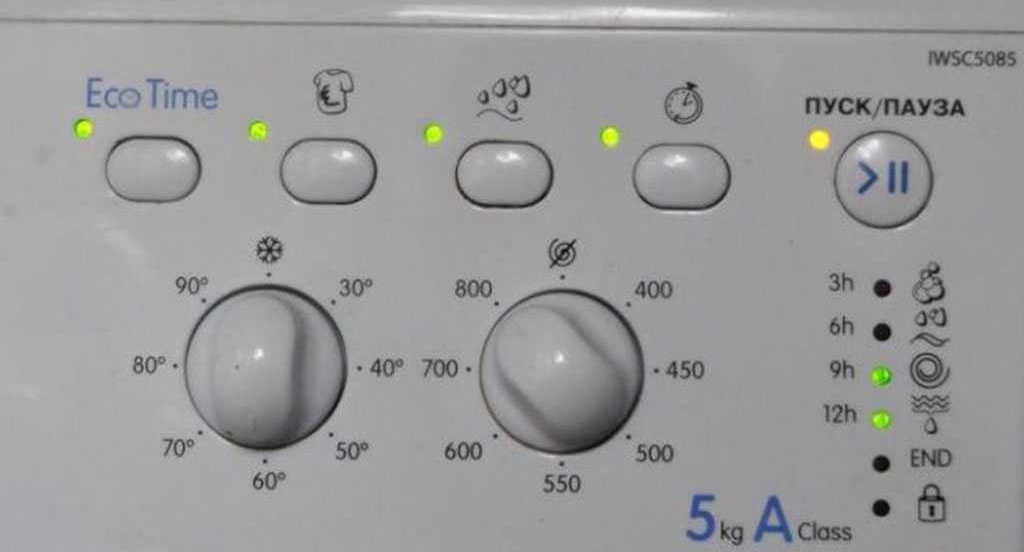
- the engine hums and runs, but the drum does not spin up to the speed specified by the program;
- the machine does not respond to pressing and holding the start button;
- LEDs on the dashboard flash randomly;
- The drum rotates only at one pace or does not rotate at all.
If at least one of the listed signs is noticed, it means the capacitor is broken. It cannot be repaired - only replaced with a new one.
Getting to the capacitor
To inspect the capacitor, you need to get to it.This is not easy to do, since the device is located on the control board - the back side of the dashboard. To dismantle the latter, you will have to partially disassemble the washing machine. We proceed as follows:
- disconnect the machine from communications;
- take out the powder receptacle by pulling it towards you;
- unscrew the bolts “hidden” behind the tray;
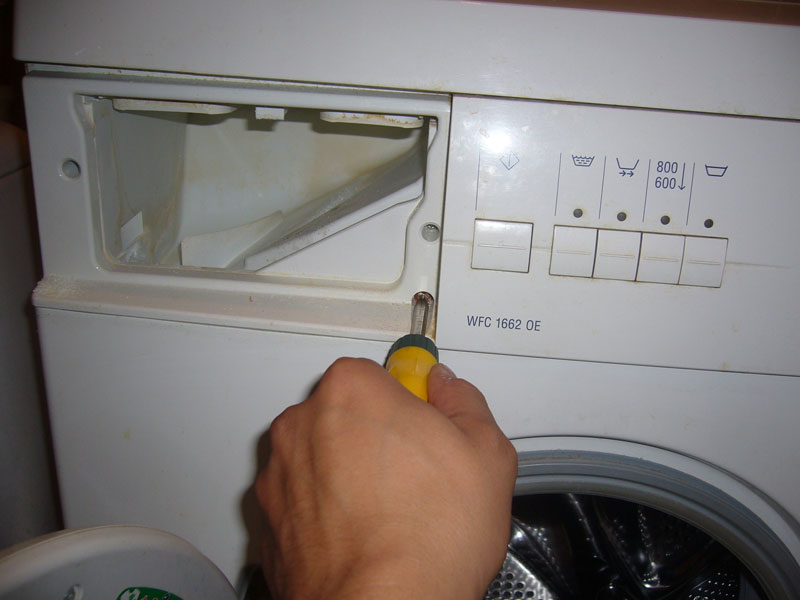
- remove the top cover of the washing machine;

- loosen a few more bolts around the perimeter of the dashboard;
- unclip the latches holding the “tidy” on top and sides;
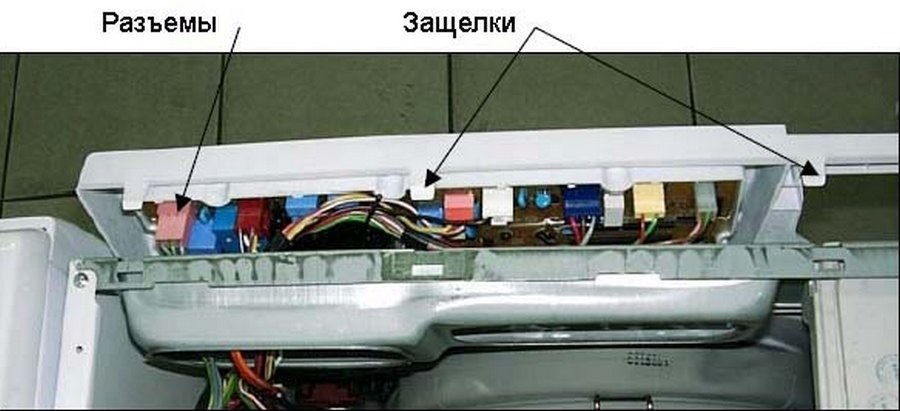
- We unhook the panel from the body without disconnecting the wiring.
It is not recommended to completely disconnect the device from the washing machine - only professionals can connect the wires back. It is better to leave the wiring alone, turning the board the right way around and placing it on top of the washing machine. Then we find a capacitor on the module and proceed to diagnose it.
Characteristics of capacitors and their testing
To diagnose a capacitor, you will need a special device - a capacitance meter. Sometimes this measurement can be done using an advanced multimeter. The procedure is as follows:
- discharge the part (short-circuit the capacitor leads);
- disconnect any of the terminals;
- set the multimeter to the mode for measuring capacitance;
- touch the probes of the multimeter to the terminals of the capacitor;
- compare the results on the device with the norm.
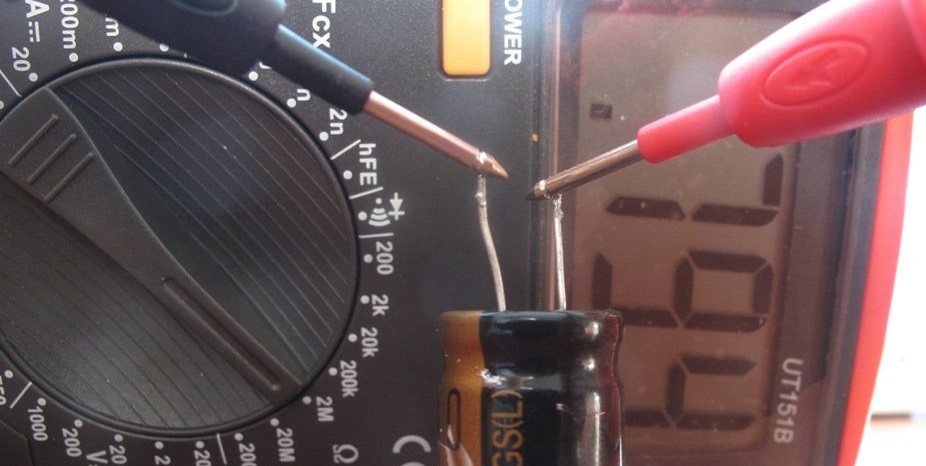
The capacitance of a capacitor represents the energy that a device can accumulate within itself. The parameter also reflects the magnitude of inrush currents that freely “pass” through the device. All this is measured in farads with a multiple prefix, often “nano” or “micro”. As a rule, there are ratings in the range of 1-100 μF (μF).If the value deviates from the norm, the part stops working and the electric motor on the washing machine slows down.
The rated voltage is also measured with a multimeter. It is indicated on the body of the part and reflects its resource:
- 400 V - about 10 thousand hours;
- 450 V - up to 5 thousand hours;
- 500 V - up to 1 thousand hours.
If the capacitor has exhausted its life or has burned out, then it needs to be replaced. The old device is soldered off and replaced with a new analogue. After the updated board is returned to its place, the machine is assembled and run for testing. Is the drum spinning? Then everything is done correctly.
Interesting:
Reader comments
- Share your opinion - leave a comment


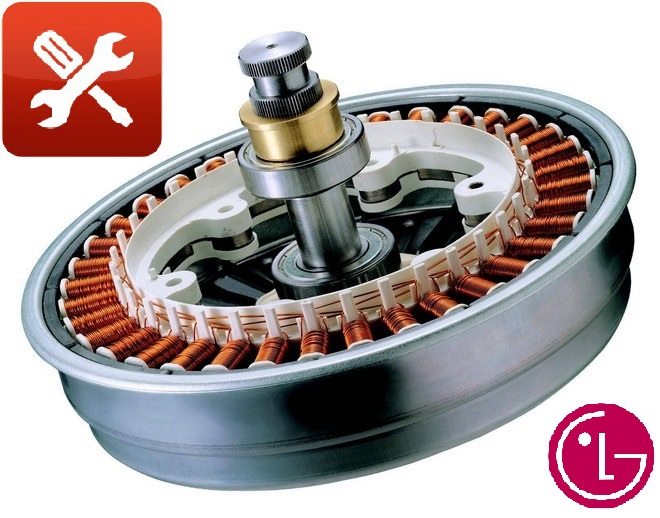


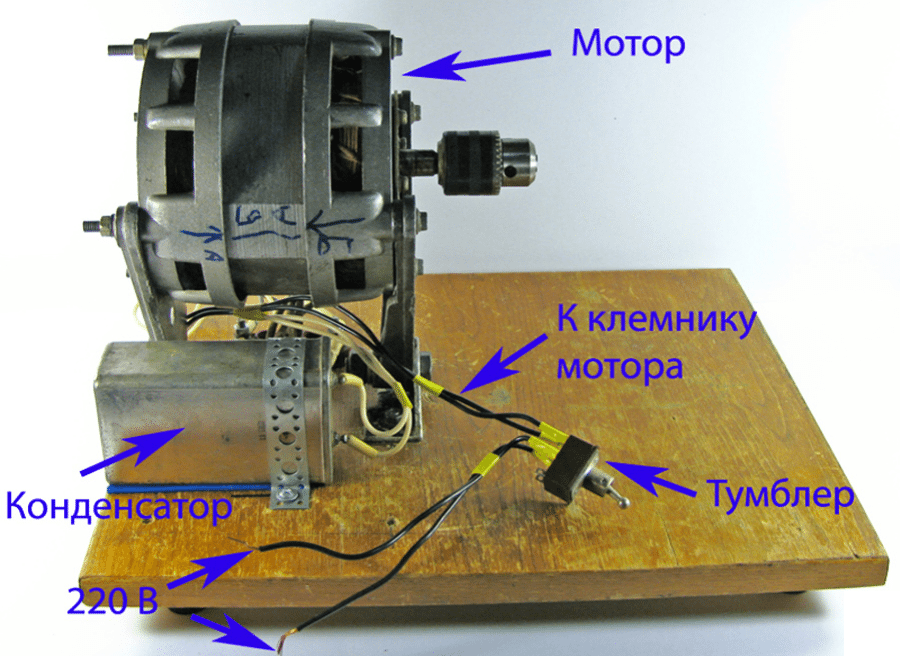
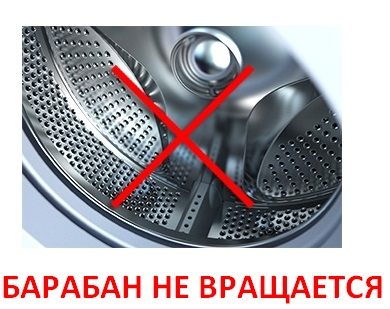














Add a comment